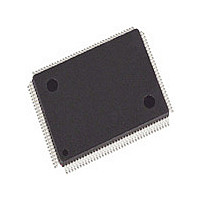LAN91C111-NU Standard Microsystems (SMSC), LAN91C111-NU Datasheet - Page 38

LAN91C111-NU
Manufacturer Part Number
LAN91C111-NU
Description
Manufacturer
Standard Microsystems (SMSC)
Datasheet
1.LAN91C111-NU.pdf
(128 pages)
Specifications of LAN91C111-NU
Operating Supply Voltage (typ)
3.3V
Operating Supply Voltage (min)
3.135V
Operating Supply Voltage (max)
3.465V
Operating Temperature Classification
Commercial
Mounting
Surface Mount
Pin Count
128
Lead Free Status / RoHS Status
Compliant
Available stocks
Company
Part Number
Manufacturer
Quantity
Price
Company:
Part Number:
LAN91C111-NU
Manufacturer:
SMSC
Quantity:
3 000
Company:
Part Number:
LAN91C111-NU
Manufacturer:
Standard
Quantity:
12 990
Company:
Part Number:
LAN91C111-NU
Manufacturer:
SMSC
Quantity:
560
Company:
Part Number:
LAN91C111-NU
Manufacturer:
Microchip Technology
Quantity:
10 000
Part Number:
LAN91C111-NU
Manufacturer:
SMSC
Quantity:
20 000
Company:
Part Number:
LAN91C111-NU-E2
Manufacturer:
SMSC
Quantity:
415
Revision 1.91 (06-01-09)
+50 mV
-50 mV
585 mV
3.1 V
100BASE-TX Link Integrity Algorithm -100Mbps
Since 100BASE-TX is defined to have an active idle signal, then there is no need to have separate
link pulses like those defined for 10BASE-T. The LAN91C111 uses the squelch criteria and
descrambler synchronization algorithm on the input data to determine if the device has successfully
established a link with a remote device (called Link Pass State). Refer to IEEE 802.3 for both of these
algorithms for more details.
AutoNegotiation Algorithm
As stated previously, the AutoNegotiation algorithm is used for two purposes: (1) To automatically
configure the device for either 10/100 Mbps and Half/ Full Duplex modes, and (2) to establish an active
link to and from a remote device. The AutoNegotiation algorithm is the same algorithm that is defined
in IEEE 802.3 Clause 28. AutoNegotiation uses a burst of link pulses, called fast link pulses and
referred to as FLP'S, to pass up to 16 bits of signaling data back and forth between the LAN91C111
and a remote device. The transmit FLP pulses meet the templated specified in IEEE 802.3 and shown
in
Figure
BT
0
0.25
BT
-3.1 V
7.7. A timing diagram contrasting NLP's and FLP's is shown in
0.5 V/ns
0.5
BT 0.6
Figure 7.7 Link Pulse Output Voltage Template - NLP, FLP
BT
0.85
BT
1.3
BT
2.0
BT
2.0
BT
DATASHEET
300 mV
200 mV
38
4.0
BT
4.0
BT
10/100 Non-PCI Ethernet Single Chip MAC + PHY
Figure
42.0
BT
SMSC LAN91C111 REV C
7.8.
+50 mV
-50 mV
Datasheet















